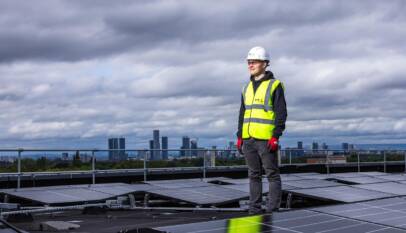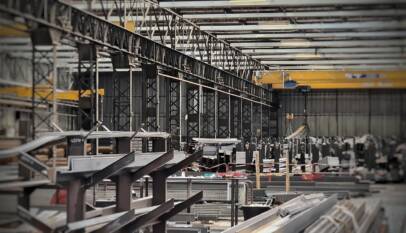
A solar panel facade integrates photovoltaic panels directly into the exterior surfaces of a building, transforming walls into energy-generating systems. This approach allows buildings to produce electricity while maintaining or enhancing architectural design.
Beyond energy production, solar facades can improve insulation and reduce a building’s overall carbon footprint. They provide a practical solution in urban areas where rooftop space for solar panels is limited.
With growing demand for sustainable construction, solar panel facades are becoming an important option for architects and developers aiming to combine functionality with environmental responsibility.
Solar Panel Facade Technology
Solar panel facades technology involve advanced materials, energy conversion processes, and design strategies that enhance building performance. Their integration requires attention to specific components, types, and architectural compatibility.
How Photovoltaic Facades Work
Photovoltaic facades convert sunlight directly into electricity using semiconductor materials. When sunlight hits the solar cells embedded in the facade, it excites electrons, generating a flow of electric current.
The energy output depends on the intensity of sunlight, cell efficiency, and the orientation of the facade panels. These facades can function both as structural and energy-producing elements, often replacing conventional cladding materials.
Electricity produced may be used on-site or fed into the grid. Advanced systems include inverters and power management units to optimize energy use within the building.
Types of Solar Panel Facades
Three major types of solar facades exist: building-integrated photovoltaic (BIPV) panels, semi-transparent PV panels, and solar curtain walls.
- BIPV panels replace traditional exterior materials with solar cells embedded in glass or metal.
- Semi-transparent PV panels allow light to pass through while generating electricity, ideal for windows and atriums.
- Solar curtain walls are large-scale glass facades with integrated PV cells, common in commercial buildings.
Each type varies in aesthetic impact, energy efficiency, and application depending on a building’s design goals.
Key Components
Solar panel facades comprise several essential components:
- Photovoltaic cells, usually silicon-based, convert sunlight into electricity.
- Glass or protective layers shield the cells from weather and physical damage.
- Support structures hold the panels onto the building frame.
- Electrical connections and wiring transfer generated electricity.
Additional elements include inverters for converting direct current to alternating current and monitoring systems to track performance.
These components must be durable, weather-resistant, and compatible with building codes and standards.
Integration With Building Design
Effective integration of solar facades requires coordination between architectural design and engineering.
Facade orientation, shading, and thermal performance influence solar cell placement and efficiency. Designers select materials and colors that balance energy generation with building aesthetics.
Solar facades can reduce cooling loads by acting as shading devices or thermal barriers. Planning during early design phases ensures the panels align with structural and mechanical systems.
Coordination with HVAC, lighting, and energy management systems optimizes energy savings and occupant comfort while maintaining architectural intent.
Applications and Considerations
Solar panel facades combine energy generation with building exteriors, impacting design, performance, and cost. Their integration affects architectural style while influencing energy savings and installation complexity.
Benefits for Modern Architecture
Solar panel facades serve as functional and aesthetic elements in modern buildings. They allow for sleek, integrated designs without bulky rooftop panels.
The panels can be custom-shaped and colored to match building materials, supporting creative architectural expression. This integration also enhances the building’s sustainability profile.
Using solar facades reduces reliance on external energy sources and aligns with green building certifications. It enables buildings to meet energy codes without compromising style or space.
Energy Efficiency Impact
Solar facades generate electricity directly from sunlight, reducing grid dependency. Their placement on building envelopes captures solar energy throughout the day.
Efficiency depends on panel type, orientation, and shading factors. Optimal design maximizes energy output without overheating the building.
In addition to power generation, some solar facades provide insulation benefits. This reduces heating and cooling demands, contributing to overall energy savings.
Installation Challenges
Integrating solar panels into facades requires careful planning around structural support and weatherproofing. Facades must handle panel weight and resist wind loads.
Electrical connections add complexity compared to rooftop systems. Specialized skills are necessary for safe wiring, maintenance access, and fire safety.
Costs for installation and materials can be higher than traditional cladding. Long-term performance depends on durability, requiring robust design against environmental exposure.
House for Sale in Mississauga: Your Guide to the Best Neighborhoods and Prices
Finding a house for sale in Mississauga means accessing a diverse real estate market that …




